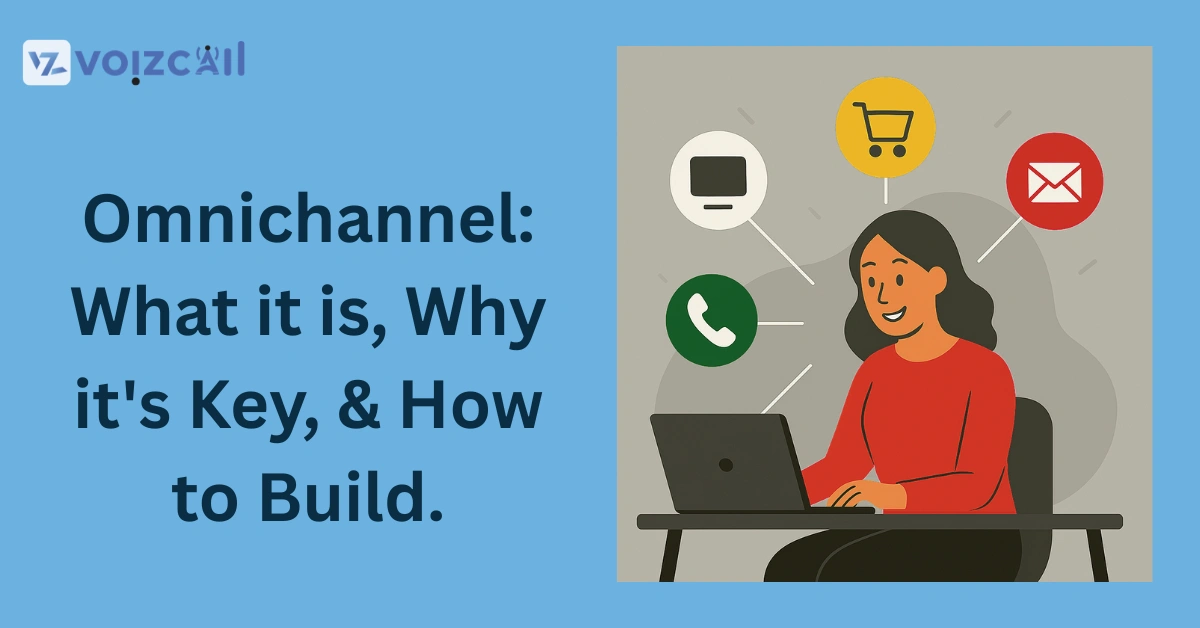


02/Jun/2025
A good omnichannel strategy prevents that from happening. Today, customers are accessible through websites, social media, emails, chat and even in stores. Failing to link those dots in your business means you are losing benefits.
I will explain what an omnichannel approach is, why using one matters and make it simple for you to try by doing it step by step.
What Makes Up an Omnichannel Strategy?
An omnichannel strategy is meant to provide a seamless experience for customers wherever they shop, both online and in person. Presence alone does not matter; it is important that the platforms cooperate.
Having a conversation on your site, getting an email response and buying in person feels natural and comfortable for the customer.That’s the goal.
Why Omnichannel Is Important
People don’t shop or communicate in just one way anymore. We bounce between devices, apps, and platforms. Your business has to keep up.
Here's why omnichannel is important:
Customers expect fast, personalized service
Businesses that use omnichannel strategies see higher customer retention
It builds trust and loyalty — because people feel understood
If your platforms communicate with each other, your customers feel you are paying attention to them.
How Omnichannel Marketing helps business
Going omnichannel helps your business in more ways than by making things simpler for your customers.
It brings serious advantages to your business:
Better customer insights
Increased sales and engagement
Smarter targeting with consistent messaging
Hitting more places where the brand’s presence reaches out
This is like treating your customer as a VIP, at every stage of their encounter with your brand.
A Guide to Creating an Omnichannel Strategy
Would you like to get started? Anyone can follow this step-by-step guide for an omnichannel strategy:
1. Know Your Customer
Understand how your customers like to interact. Are they on social media? Do they prefer email? Learn their habits.
2. Map the Customer Journey
Think about the full experience — from discovering your brand to buying and beyond. Identify touchpoints across platforms.
3. Connect Your Channels
Make sure your tools and platforms work together. That means syncing CRM, email, chat, POS, and social media tools.
4. Keep Messaging Consistent
Whether it's a Facebook ad or a website banner — your voice, tone, and message should feel the same.
Call / Email for Sales Inquiry Today
5. Use Data to Improve
See what your customers are doing, discover what’s getting results and respond by making necessary changes. Omnichannel changes with your business over time.
How to Set Up an Omnichannel Approach That Is Successful
Starting with smaller first steps will help you design an omnichannel strategy that fits your business.
You don’t need every channel at once.
Pick two or three channels your customers use the most. Get those working smoothly together. Then expand. The key is connection, not quantity.
You’re not trying to be everywhere — just where it matters, and in a way that feels personal.
Conclusion: Time to Get Connected
Now that you know what an omnichannel strategy is and how to create one, you’re already ahead of many businesses. It’s not about being perfect — it’s about being present and consistent.
When your customer feels like you “get” them, they stick around.
So here’s the big question:
Is your business ready to give customers a seamless experience across every channel they use?